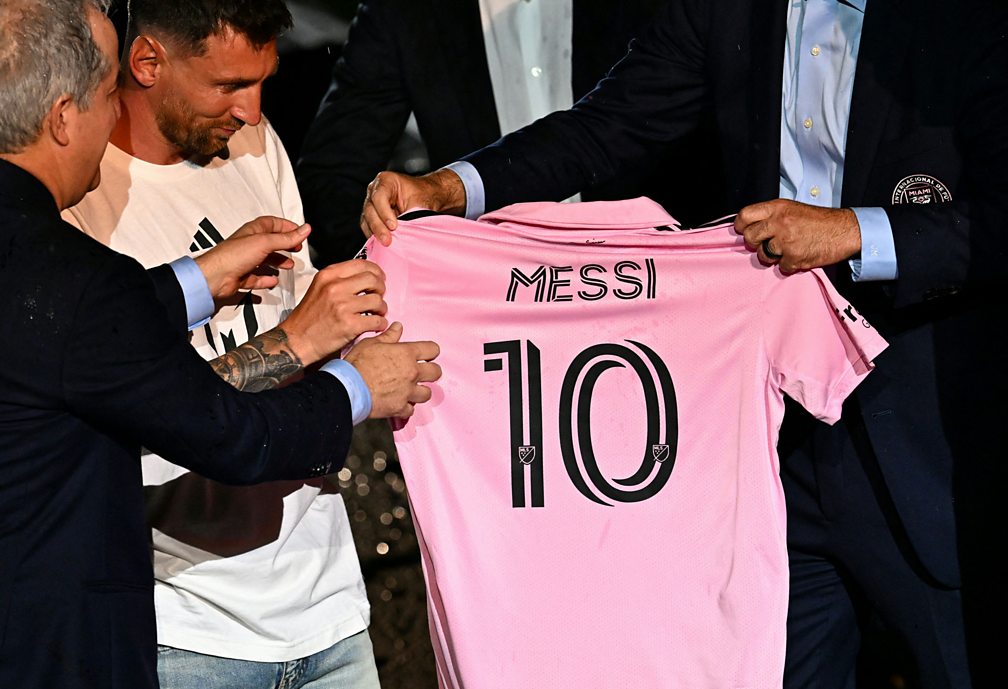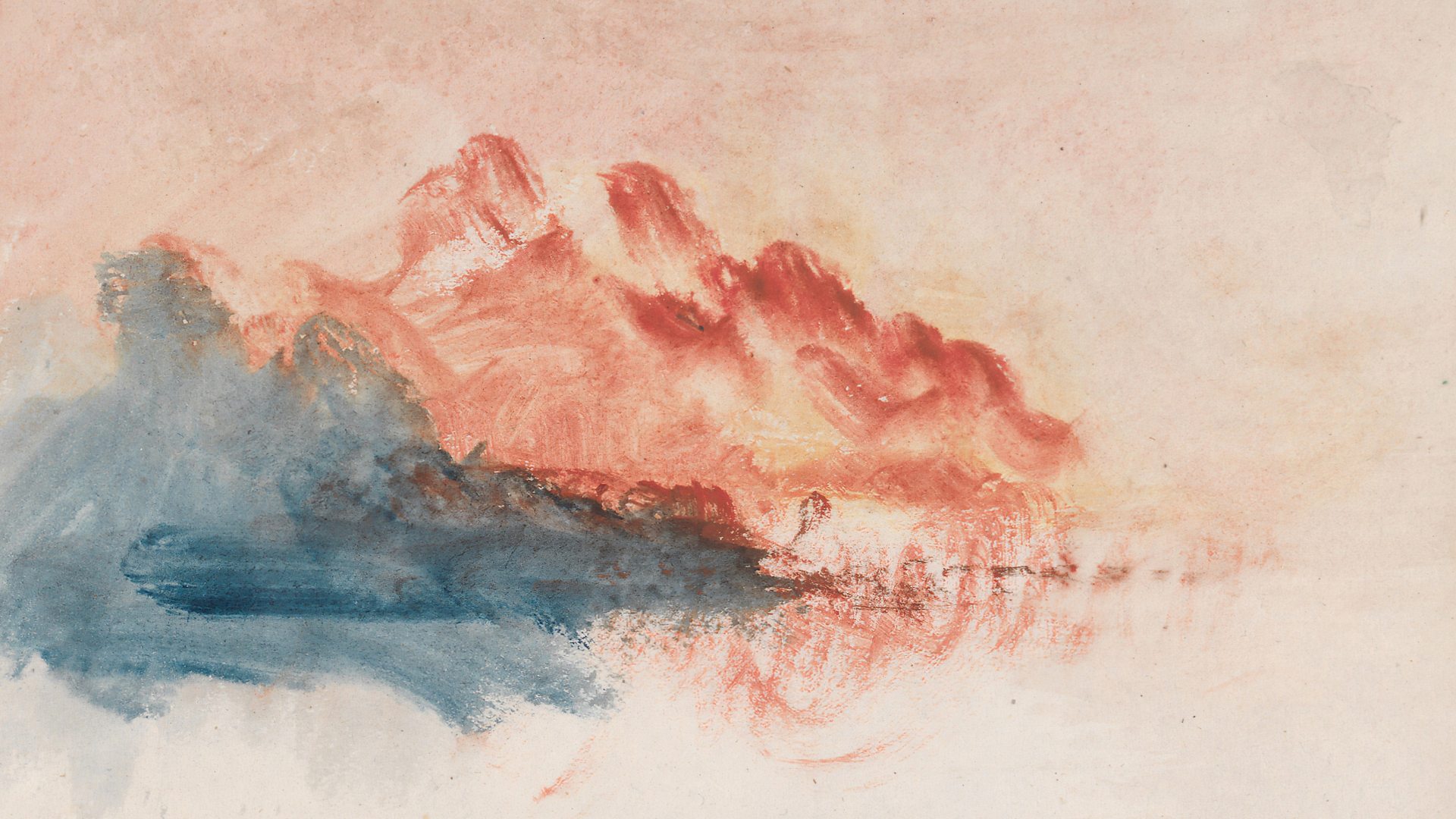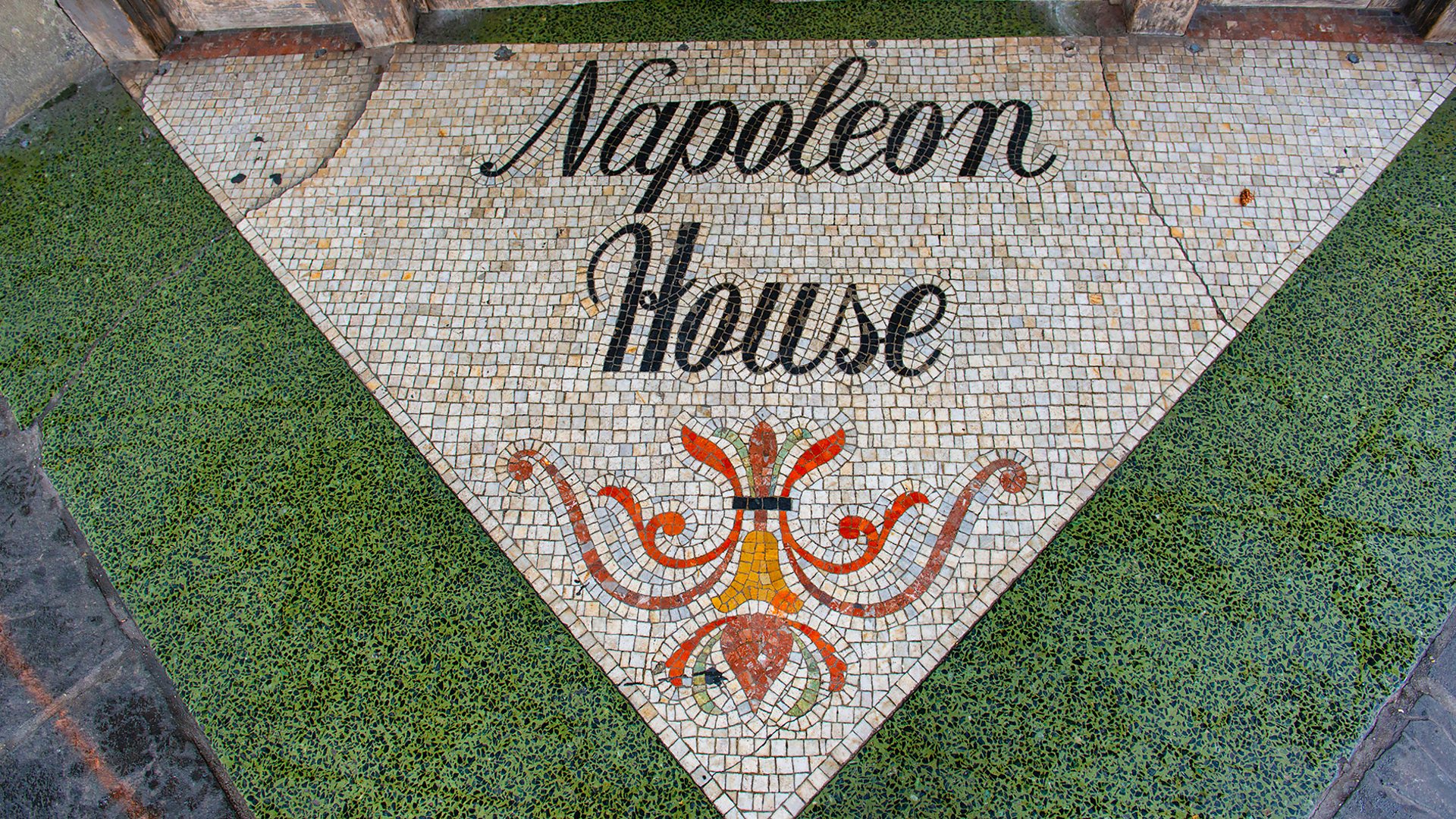The colour pink and how the new Barbie film might subvert our expectations

Despite long being associated with submission and passivity, the colour pink has been reclaimed, symbolising subversiveness – which is embraced in the new Barbie film, writes Clare Thorp.
Does it feel like you're looking at the world through rose-tinted spectacles right now? You're not alone. If summer 2023 has a colour, then it is undoubtedly pink, and it's all down (mostly) to one woman: Barbie.
The new live-action film about the iconic doll, starring Margot Robbie and directed by Greta Gerwig, has leant right into Barbie's association with the colour, its set designers working with a palette of 100 different shades, and apparently contributing to a global shortage of pink paint. The movie's all-conquering marketing campaign has left a sea of pink wherever it goes, from billboards, buses and the cast's (pink) carpet outfits to a real-life Barbie Dreamhouse on Airbnb, more than 100 brand tie-ins and a Google takeover.
More like this:
- The real-life inspiration for Barbie
So ubiquitous is the build-up to Barbie's release that you could be forgiven for thinking Lionel Messi was on the Mattel payroll when he officially signed for Inter Miami at the weekend, revealing his pink number 10 jersey. The club – co-owned by David Beckham – launched its striking new kit in February and is still only one of a small handful of professional male teams to play in pink – a colour that, despite featuring heavily in recent menswear collections, is still strongly associated with women.

It wasn't always the way. As Kassia St Clair, a cultural historian and author of The Secret Lives of Colour, notes, the girl-pink/boy-blue divide didn't set in until the mid-20th Century. An 1893 article on baby clothes in The New York Times stated that you should "always give pink to a boy and blue to a girl." Pink was seen as the stronger colour – a relative of the passionate, aggressive red, while blue was the signature hue of the Virgin Mary. "My father was born in 1925, he's a military man and yet pink is his favourite colour and he doesn't see anything peculiar about that," St Clair tells BBC Culture. "But for me, growing up as a child of the 80s and 90s, of course, pink was very much a feminine colour, and I had it shoved down my throat. So for a long time, I completely avoided pink. I was fed up with it. I had a very complicated relationship with it."
Pink morphed into something delicate, cutesy and unthreatening after World War Two, when men went back to work, and women were retreating into the home. Two key moments, signifying two different but equally limited versions of womanhood, came in 1953 – Marilyn Monroe's fuchsia pink gown in Gentlemen Prefer Blondes, and the soft pink ballgown Mamie Eisenhower wore to her husband's inauguration. The First Lady was held up as a feminine ideal, and pink was her favourite colour. It kickstarted a trend for pink clothing, interiors and appliances, which soon impacted toys too. "It was fashionable at exactly the same time as there was this absolute explosion of consumer goods and advertising becomes much more sophisticated," says St Clair. "Pink emerged as the default colour for women and has managed to retain that for an awfully long time."

Singer and actor Jayne Mansfield, who lived in her own "Pink Palace", said: "men want a girl to be pink, helpless, and do a lot of deep breathing." Pink had come to signify something delicate and submissive – but some had other ideas. "Pink is the only true rock 'n' roll colour," said Paul Simonon of The Clash, and the hue became a favourite of punk bands like The Ramones and The Sex Pistols, with Vivienne Westwood's Sex Shop sporting a bright pink neon sign.
Around this time, pink also emerged as a symbol of celebration, self-identification and pride in the LGBTQ+ community – who in the 1970s reclaimed the colour from its dark past in Nazi Germany, when pink triangles were used to identify gay prisoners in concentration camps. In the 1980s, the pink triangle became a sign of resistance, featuring on posters during the Aids crisis, and remains a powerful symbol in the queer community.
In the 21st Century, pink became an increasingly controversial colour, rejected by some and reclaimed by others. Advertisers who marketed female products using pink – from Lego sets to pink footballs – faced a backlash. The "pink tax" became a damning term to describe the idea that women paid more than men for identical products, such as toiletries. Campaigners called for the end of gendered pink and blue toys, with reports warning lazy stereotyping could affect a child's future prospects.
If all this showed how powerful pink could be, some harnessed that power to their advantage. Politicians like Hillary Clinton and Nancy Pelosi embraced pink suits – a way to subtly wield authority while also reassuring that they weren't a threat. This idea was explored in popular culture, too. In Legally Blonde, the pink-obsessed Elle Woods (played by Reese Witherspoon) is dismissed as a dumb blonde – but lands a place at Harvard Law School ("What, like it's hard?") and graduates top of her class.
The past decade has been another complicated one for the colour. Millennials even had their own shade of pink – but this watered-down hue was an almost apologetic version. "The kind of pinks that have done really well in the past few years and transcended girliness have been yellow and grey-based pinks, instead of the blue-based pinks, like Barbie pink and Legally Blonde pink," says St Clair.
Some feminists have celebrated pink as a symbol of female power. At the 2017 Women's March thousands of women wore handcrafted "pink pussy hats" – though others argued it trivialised the serious issues they were protesting against.
So, as Barbie makes the colour inescapable once again, what does it represent now? Director Greta Gerwig said she wanted to make "something anarchic and wild and completely bananas", and says "it most certainly is a feminist film... in a way that includes everyone." (Although Mattel themselves beg to differ). Actor America Ferrera was drawn to the film because it confronts Barbie's role in "shaping expectations for women" and her character Gloria – assistant to Mattel's CEO and mother of a teenage daughter – delivers a pivotal monologue that Margot Robbie says "captures the cognitive dissonance of being a woman under the patriarchy".
This inclusive and feminist take on Barbie – which also fully celebrates pink – looks set to be one of the biggest films of the summer, if not the year – and has the potential to be the most successful film ever by a female director. There's nothing delicate, dainty or frivolous about that. Pink has rarely felt more powerful.
In the film, too, pink is for everyone – including Ken. And although one movie – or one world-famous footballer wearing pink – is unlikely to singlehandedly change our perception of pink as a gendered colour, our fraught relationship with it might be shifting. "Shorthands and clichés are very powerful and it's difficult to escape them," says St Clair. "I think what is changing is there's a loosening of the idea that pink is a limiting colour and that pink means something lesser than blue. There's a power and a knowingness with the way that pink is used now. It's coming with a wink."
Love film and TV? Join BBC Culture Film and TV Club on Facebook, a community for cinephiles all over the world.
If you would like to comment on this story or anything else you have seen on BBC Culture, head over to our Facebook page or message us on Twitter.
And if you liked this story, sign up for the weekly bbc.com features newsletter, called The Essential List. A handpicked selection of stories from BBC Future, Culture, Worklife and Travel, delivered to your inbox every Friday.




